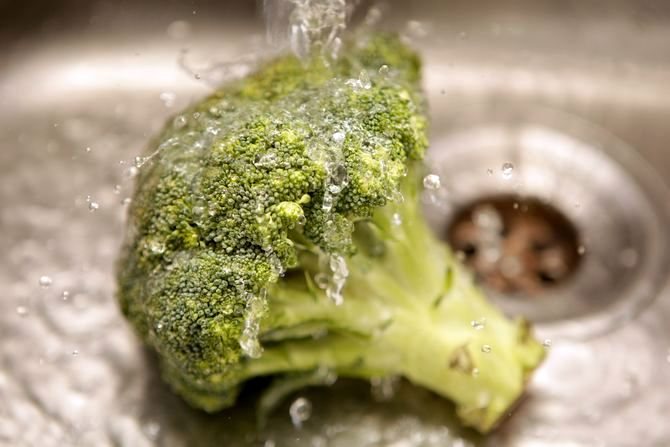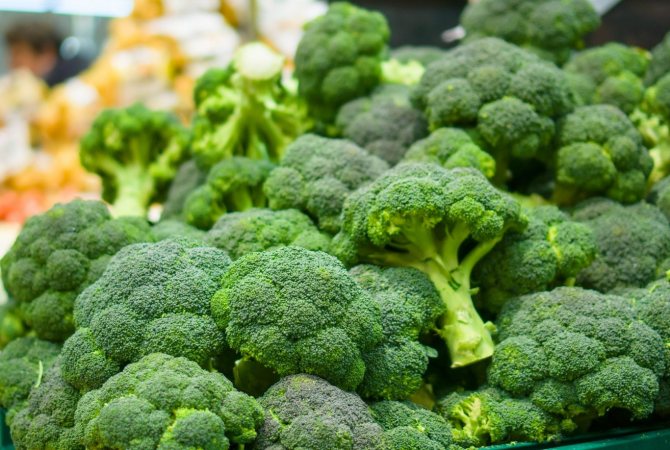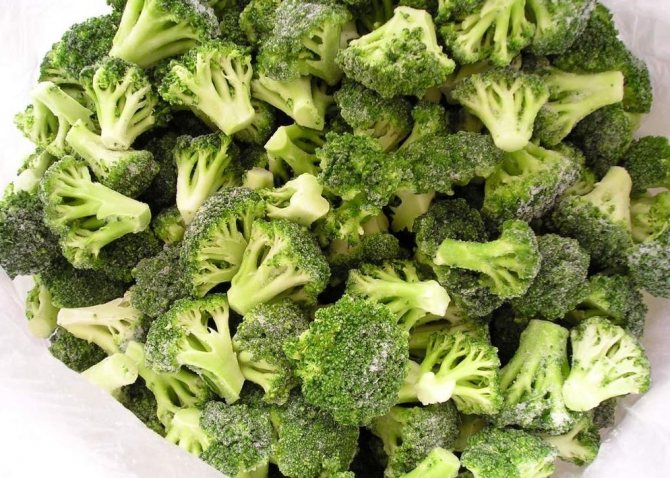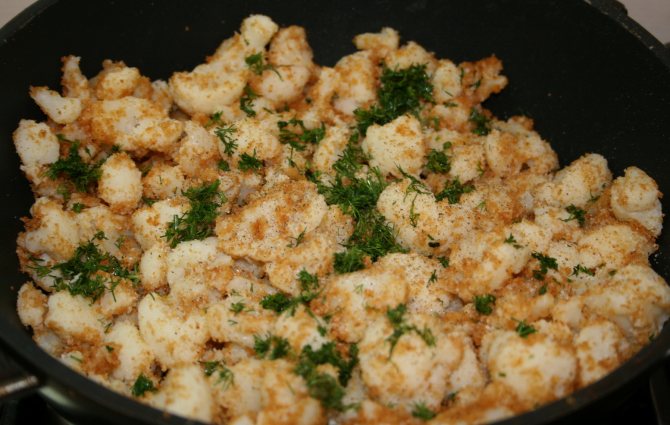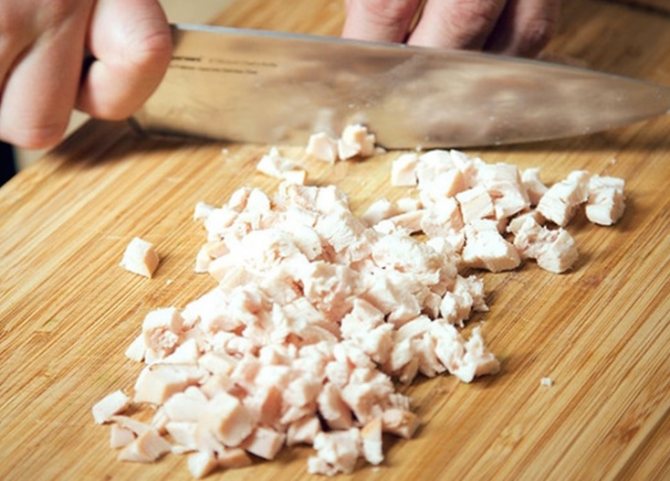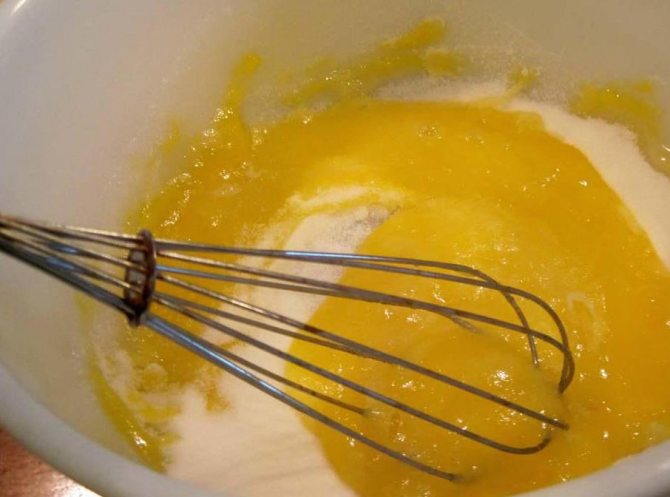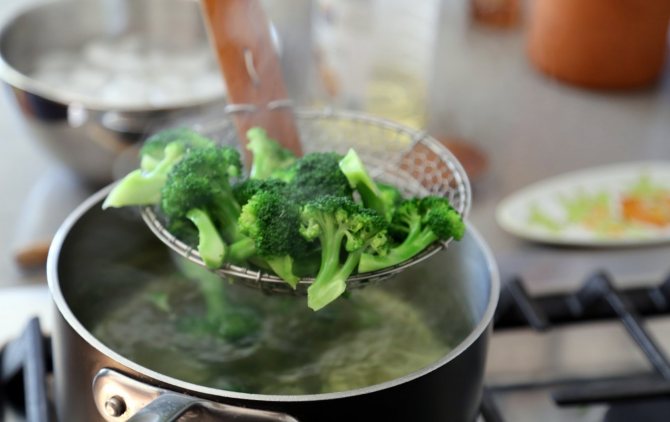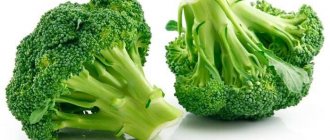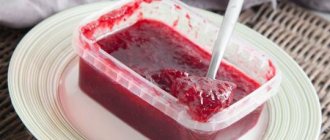Vegetable growing »Cabbage
0
870
Article rating
Freezing broccoli allows you to use the product with its beneficial properties and get the full range of vitamins at any time of the year. It is convenient to store and eat cabbage in this form.

Freezing broccoli
Freezing broccoli: pros and cons
Broccoli is sold in stores mostly frozen. This vegetable tolerates icing very well. Many have not even seen fresh broccoli.


For broccoli, as with many types of vegetables, shock-freezing or quick-freezing is preferable. Modern cameras offer this function, it is enough to set the temperature below the standard -18 ° С.
There are many advantages to freezing broccoli:
- So a healthy and low-calorie vegetable can be stored for up to 1 year.
- Vitamins, taste remain in cabbage, it is easy to prepare.
When stored for a long time in the freezer, the product somehow loses its useful properties, especially if it was accidentally defrosted and re-frozen, for example, the refrigerator was disconnected from the network. If you plan to keep the cabbage harvest for a long time, then take care of reliable household appliances.
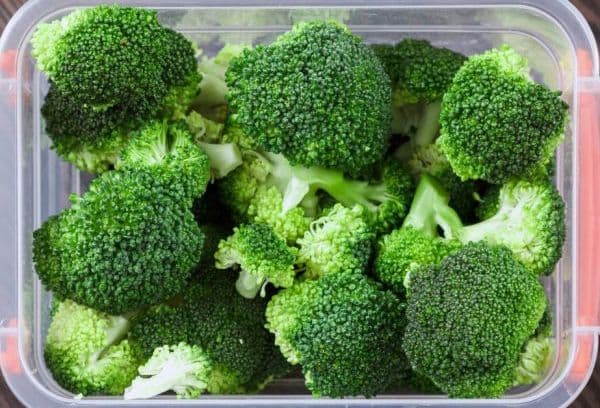

How much broccoli is stored
The storage time of broccoli depends on the temperature and humidity of the air. The lower the temperature, the longer the cabbage is stored:
- in the refrigerator, at a temperature of 4 ° C to 7 ° C - no more than 3 weeks;
- in a cellar, where the temperature is stable from 0 ° C to 3 ° C - up to two months;
- frozen (minus 18 °) - from 6 to 8 months.
If you decide to store in a refrigerator or cellar, then keep in mind that the air humidity must be at least 90%.
Choosing cabbage
It all starts with choosing the right samples. Rotten, unripe and deformed pieces do not lie well. Take only this broccoli:
- Look for forks that are elastic, not too small and not too large. The optimum diameter is 15-17 cm.
- The color of the broccoli should be a uniform dark green. No yellowed patches or dark spots are signs of overripe cabbage.
- Inspect the cabbage for pests - they are superfluous in the harvest.
Tip Miss Clean magazine draws your attention: the healthiest broccoli is fresh from the garden. If you are growing this cabbage, try to freeze it within 2-3 days after harvest.
Preparation
Broccoli is divided into inflorescences before freezing. Firstly, it is not convenient to store a whole head of cabbage, it will take up a lot of space, and secondly - the pieces will freeze faster, and this will allow you to preserve a maximum of vitamins and microelements.
First, take the forks apart and rinse them thoroughly. The next step, which is not recommended to be skipped, is soaking in salt water. Salt is added to kill insect larvae, which are not always visible to the naked eye. Prepare a solution of 1 liter of water and 1 tbsp. l. salt, pour over broccoli and leave for half an hour. All harmful creatures will float to the surface.
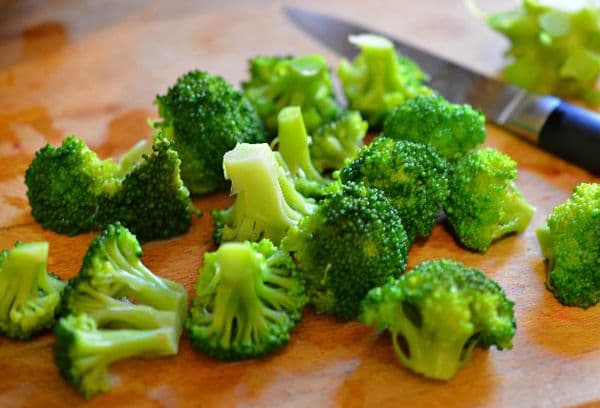

Tip Soaking vegetables is also recommended to draw out excess nitric acid salts, which are better known as nitrates. If you bought a vegetable on the market, then soak it for 15 minutes in water to neutralize hazardous substances.
Remember to rinse the soaked broccoli in clean water to remove any salt residues.
Blanching
An optional but recommended procedure is blanching. Its essence is short-term scalding with boiling water or steam treatment. Why you need to blanch broccoli:
- So the cabbage will not darken.
- More vitamins will be retained.
- After defrosting, a blanched vegetable will cook much faster.
- Harmful microorganisms are destroyed (they can multiply in the freezer).
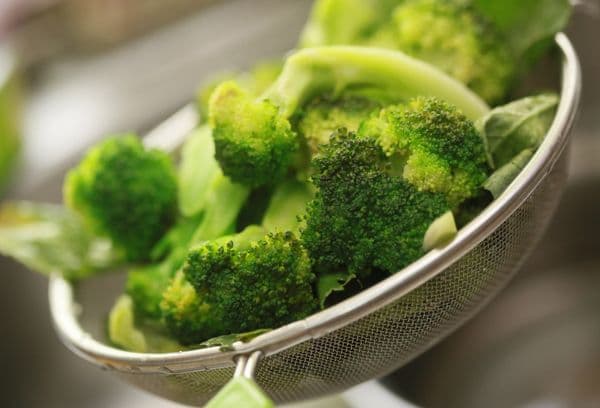

How easy and simple to blanch in boiling water:
- Heat water in a saucepan.
- Place the broccoli in a sieve.
- When the water boils, dip the cabbage in it and hold it for a couple of minutes, no more.
- Now take out the sieve and immediately send the vegetable under running ice water.
Steam treatment is another option. To do this, you need a double boiler. Steam the cabbage for no more than 7 minutes.
After any kind of blanching, dry the inflorescences on a napkin or towel. Do not use colored newsprint. The cold mode of the hair dryer will help speed up drying. The cabbage is now ready to freeze.
How to Boil Broccoli to Preserve Color
Broccoli, or Italian asparagus, is the queen of the dietary table. Small green buds contain the daily requirement of vitamins A, K and C. Use tips on how to cook broccoli so that when cooked, the cabbage retains its beneficial properties and looks presentable.
There are secrets on how to cook broccoli so that it is not soft, but not too hard, and also does not change color:
- Choose strong and bright green buds. Yellowish and wilted or frozen specimens are no longer as nutritious as fresh ones, and will boil during cooking.
- Broccoli cannot be cooked with a whole fork. It is disassembled into inflorescences.
- Dip the vegetable in steep, well-salted boiling water.
- When cooking is complete, immediately transfer the broccoli to ice water (add ice cubes to cold water).
- If you like the bright green inflorescences of cabbage, then you can save this color if you know how much to cook broccoli and use the temperature shock after heat treatment.
The broccoli recipe recommends keeping the inflorescences in boiling water for no more than 5-7 minutes. The cooking time determines the density of the inflorescences and the purpose.
If cabbage is a complementary food for a baby up to a year, then boil it for 7 minutes. If you are cooking for adults and older children, then 5-6 minutes is enough.
This applies to any kitchen devices: classic cooking on a gas or electric stove, in a multicooker or a double boiler. For those who eat broccoli to lose weight, it is better to steam vegetables. They will retain their crispness and appetizing.
- To get well-cooked broccoli:
- rinse the inflorescences under running water;
- cut off the stalk and disassemble it into parts convenient for cooking;
- boil 1-1.5 liters of water and add half a teaspoon of salt;
- put the vegetable in a pot of boiling water;
- prepare a container into which put the finished product with a slotted spoon;
- place the container in a bowl of ice water or place it on ice cubes.
- If you need advice on how to cook broccoli for feeding your baby, then:
- cook without salt;
- after cooking, grind in a blender.
The consumption of broccoli depends not least on the quality of its preparation and appearance. To eat right and enjoy broccoli, follow these guidelines and guidelines.
How to freeze: rules
How to properly freeze broccoli:
- For storage, use special freezer bags or plastic containers with lids. The material must be resistant to low temperatures and strong enough.
- Place cabbage in bags only in dry form.
- Distribute everything in portions to use one blank at a time. Re-freezing is harmful to any food, try to avoid this.
- You can first freeze the inflorescences, and then fold them in bags. This way they will definitely not stick to each other.
- The standard storage temperature is 18 degrees below zero. If possible, set the indicators below.
- Shelf life is 8-12 months, but it is better to eat the product faster.
- Broccoli can be harvested as part of a vegetable mixture or with herbs. To do this, simply chop it finely.


Tip In the case of large quantities, attach stickers with the date of placing the food in the freezer on the bags and containers. This way you will not forget to use everything before the expiration date.
When to harvest
Cut the broccoli as late as possible for storage, but it is important not to let it overripe. It is better to choose a cool and cloudy day, or go out to the garden for picking early in the morning or late in the evening. Do not expect frost, otherwise the entire crop will be lost.
Leave a leg about 15 cm long when cutting. If the day is warm, do not leave the cabbage heads lying in the open air. Take them out in the cold right away, because broccoli loses its flavor very quickly and it loses its firmness. Literally after half an hour of "rest" in the shade, 30% of nutrients are lost.
Defrosting what to cook with frozen broccoli
Broccoli is eaten only after heat treatment, so in any case, the product will go to the pan or to the pan with broth. Therefore, the vegetable does not require special defrosting - just throw it into the future dish. If the cabbage is left at room temperature for a long time, it will soften and deteriorate.
The easiest way to make frozen broccoli is to boil it. Add inflorescences to vegetable and meat soup, it turns out very tasty vegetable in cheese soup, goes well with fish and seafood.


Another way is to fry it alone or as part of a vegetable stew.
Don't forget how delicious the baked broccoli is. This method, along with steaming, is the healthiest one. Bake broccoli with cheese, omelet, pasta and other vegetables. Shredded cabbage is perfect for pizza toppings.
Steamer cooking method
You can cook frozen broccoli using the same technology in a double boiler. This method is optimal for people who follow a diet or adhere to the principles of PP and healthy lifestyle. It also takes a minimum of time.


Sequencing:
- Boil 1.5 liters of water in a double boiler.
- We put the cabbage inflorescences on the upper level.
- Cooking for 10 minutes.
- If desired, pour ice water over the vegetable and season with your favorite spices and sauces (soy sauce, garlic, vegetable oil, hot pepper, etc.).
Note! If the broccoli is frozen with a whole head, without dividing into separate inflorescences, the steaming time is increased by 3 to 5 minutes.
Choosing and preparing broccoli for freezing
For harvesting broccoli for the winter, only green mature heads of cabbage with dense inflorescences without yellowness, dents and traces of rot are suitable.
Pay special attention to the inflorescences: they should not contain any insects or signs of vegetable diseases, otherwise the plant will quickly deteriorate and will have to be thrown away. The better the quality of the cabbage, the longer it will be stored after freezing and the better it will taste.
You need to start freezing broccoli immediately on the day of purchase. Preparing vegetables takes a little time and is done in just a few steps.
- Remove green leaves.
- Separate the inflorescences.
- Trim hard parts.
- Rinse the broccoli cabbage.
- Soak the cabbage in a special solution (4 tablespoons of salt per liter of water) for 25 minutes.
- Rinse again.
Thoughtful preparation will help to properly freeze broccoli, retaining all its beneficial properties for the whole winter. Do not forget about the refrigerator: the freezer must be freed from other products, washed and dried thoroughly.If there is no “quick freezing” function, then you need to set the temperature from -10 ° C to -15 ° C.
Home freezing methods
Freezing broccoli at home is a long process, but does not require special skills or very complex manipulations. It is enough to follow the step-by-step instructions and everything will work out and remember a few secrets:
- lime or lemon juice will help preserve the color of the cabbage;
- do not blanch broccoli in the microwave;
- do not cut vegetables on the board used to prepare raw meat.
Raw
Under no circumstances should broccoli be frozen raw. In the freezer, due to the low temperature, the inflorescences simply crumble into dust and after that it will not be possible to cook them.
Blanched
Freezing broccoli with blanching is considered the best storage method. Thanks to blanching, enzymes that promote oxidation are killed, which means the vegetables will not acquire a nasty smell, retain their taste and structure - the cabbage inflorescences will definitely not crumble.
Blanching can be done in two ways.
A multicooker, a double boiler and even an ordinary saucepan are suitable for this, if there is a special container for steaming. The steamer is the easiest to do. Bring the water mixed with lemon juice to a boil, put in a special container, close the lid tightly, cook for five minutes.
Steam treatment is the best option. All the useful substances of cabbage will not only remain in the composition during the cooking process, but will also be released, since heat tends to destroy molecular bonds.
Dip vegetables in boiling water, boil for a couple of minutes. It is best to lower it immediately in a sieve so that it can be easily and quickly removed from the water afterwards. It should be blanched in small portions so that the liquid boils faster and the broccoli is not digested.
If you want to freeze the cabbage and keep it green, simply pour the juice of half a lemon into the water.
When the broccoli has cooled, spread it out on a towel to remove any excess moisture. After that, you can put them in bags and put them in the refrigerator. Do not forget to sign them to remember the date of harvest and not to miss the end of the shelf life.
Boiled broccoli
Many housewives wonder whether broccoli should be boiled before freezing. The answer is no, since during the cooking process the vegetable loses most of its vitamins. If you do decide to cook it, then do not immerse the broccoli in cold water, only in boiled and always salted, this will help preserve the chlorophyll.
Useful Tips
By applying some tricks, you can use the space of the freezer more productively and achieve better quality of the frozen product:
- To minimize the space occupied by the product, you can create a vacuum in a bag made of dense polyethylene with a snap. This is true for refrigerators with small freezers. In the corner of the latch, you need to insert a tube and draw air out of the package, and then carefully close it;
- lemon juice added during blanching will make the color of broccoli more saturated and bright;
- to quickly dry the inflorescences, you can blow them with a hairdryer in the "cold air" mode;
- For vegetable soups, you can freeze a mixture of chopped vegetables and herbs for one cooking.
Did you know? The inventor of modern food freezing is the American Clarence Birdseye, who discovered the benefits of rapidly chilling fish at –40 ° C in the 1920s.
Using the capabilities of modern household appliances, you can freeze vegetables at home while preserving the taste and nutritional properties of the product. With the observance of technology and the correct selection of raw materials, broccoli can be stored for a long time and can be part of many dishes of everyday and festive cuisine.
Storage features
Deep freezing requires a temperature not higher than -18 ºС and allows all the beneficial properties and taste of cabbage to be preserved throughout the whole year. If the temperature is from 0 ºС to 8 ºС, the storage time is automatically reduced to three months.
Freezing broccoli for the winter is easy, but the main thing is not to do it again. This is especially worth remembering if you are going to defrost the refrigerator. In such a situation, it must be ensured that the temperature is kept low to preserve the product. For example, wrap a bag of vegetables in a blanket while you clean the refrigerator.
Frozen broccoli recipes
Whichever way you choose to freeze broccoli, remember that before cooking any dish, you do not need to defrost it, start cooking right away. Otherwise, it will lose its shape, it will look like a soft gruel of an unpleasant appearance. The cooking time of cabbage is influenced by the degree of freezing.
If you decide to freeze broccoli but don't know how to cook it. Then do not worry, there are many recipes: broccoli can be boiled and served as an independent dish, for example, with cheese sauce, you can also fry in batter from eggs and breadcrumbs, make a salad or soup.
Broccoli and bacon puree soup
150 grams of bacon;
500 ml 11% cream;
2 teaspoons of vegetable seasoning;
700 grams of frozen broccoli.
Cooking method:
- Put the cabbage in a saucepan, cover with water.
- When it boils, add salt and soda, cook for a couple of minutes.
- Transfer the cabbage to a sieve, rinse.
- Pour the cream into a separate small saucepan, add the seasonings, add the onion, peeled and cut into quarters, remove from heat as soon as it boils, strain through a sieve.
- Grind the broccoli from the butter in a blender.
- Pour the resulting mixture into a saucepan, warm up for a couple of minutes, stirring continuously.
- Cut the bacon into small pieces, fry in oil for 2-3 minutes, add to the finished soup.
Method advantages
There are many advantages to freezing, and the main ones are as follows:
- Convenience of storage. Frozen cabbage of this type does not take up much space in the freezer, does not absorb odors and can retain all its nutritional properties for a long time.
- Preservation of useful properties. Freezing, unlike other methods of storing food, allows you to almost completely preserve the complex of useful characteristics and the range of taste. If all the manipulations are carried out correctly, following the instructions, the product will hardly differ from the fresh one in taste, color, or vitamin content. This is especially important for those who plan to cook broccoli for a child, since it is extremely useful to freeze a vegetable for the winter and prepare delicious food from it for children.
- The product is always at hand, which significantly saves time. There will be no need to visit the store every time to prepare a healthy breakfast or lunch for the family. Broccoli will always be at home in a form that is completely ready for heat treatment and serving.
- Saving money. It's no secret that vegetables in winter are much more expensive than in season. Therefore, having bought food during the period when the price for them is low, and freezing them, during the winter you can use broccoli to prepare full meals, while not spending the family budget on expensive groceries in the store.
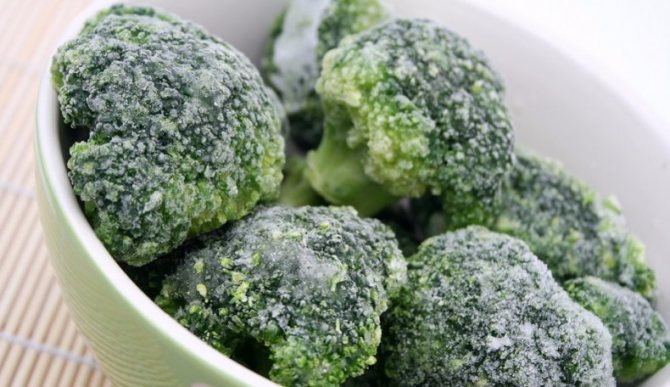

You can freeze almost any food product, but it is important to do everything right in order to preserve the maximum amount of nutrients in the vegetables.
Re-freeze
For in order to rationally use a frozen vegetable, it is recommended to immediately pack it into portions... Otherwise, you will have to chop off the required amount of cabbage from a large piece or defrost all unnecessarily large amounts of product at once.
If, for some reason, more cabbage has been thawed than is necessary for the preparation of one dish, the question arises whether it is possible to freeze the workpiece again. You should not do this - you need to use everything in a day.
Once thawed cabbage is no longer subject to re-freezing due to the following reasons:
- loss of color, texture, aroma and taste;
- loss of a significant part of nutrients;
- unsafe health.
When preparing to freeze vegetables for the winter, you should take care of a small container (plastic containers or special bags) in advance, which will allow you to package the product optimally.
Choosing and preparing broccoli
Before you start freezing, you need to choose the right raw materials. Many people are mistaken, believing that absolutely any product, even a low-quality product, can be sent to the freezer. Such storage will reduce all procurement costs to zero. It should be understood that only young cabbage of a rich green color can be stored for a long time and not lose its quality characteristics. It is also important to monitor so that the inflorescences are not affected by various diseases and insects.
Naturally, the best option would be to collect and freeze the product that is collected in your own garden. But since this "luxury" is not available to everyone, you can pick up quality broccoli in the supermarket and in the regular vegetable market.


Products are absolutely not suitable for freezing:
- with wilted inflorescences;
- with the presence of even the weakest rot on inflorescences or stems;
- with signs of pest damage;
- shrunken and yellowed.
Freezing broccoli: step by step instruction
Freezing broccoli is a process that will take a certain amount of time, but in general it is quite simple and not difficult to implement. For convenience, we offer step by step instructions for preparing broccoli for the winter:
- First you need to purchase or collect broccoli cabbage, following the above recommendations. Optimal time period: June-July. The inflorescences should be fairly dense, bright green. Damaged and stained vegetables are not suitable for long-term storage.
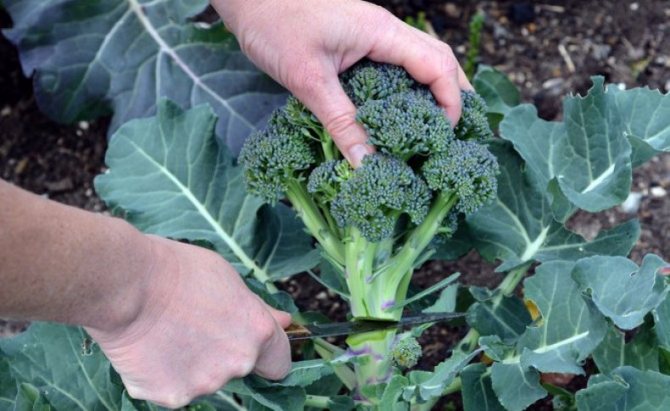

- Then rinse the food thoroughly. It is very important to remove all impurities as the product will be cooked later without rinsing. If you have doubts about the presence of pests or worms in broccoli, you can soak the product in saline solution, leaving it in it for about half an hour. Thus, it will be possible not only to destroy the parasites, but also to provoke their rise to the surface. After keeping the vegetables in solution, they will need to be rinsed again in clean water. At the end, you should also remove all the leaves from them.
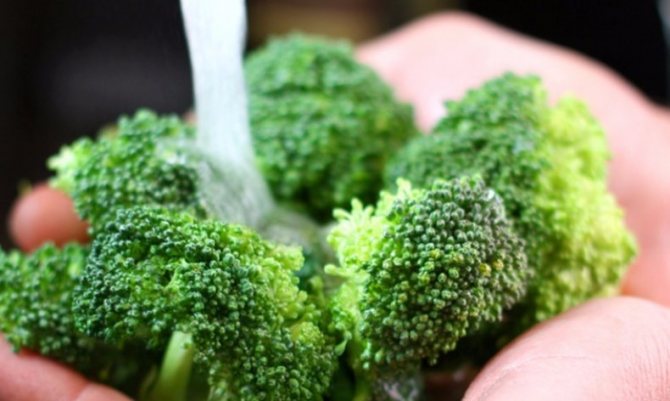

- Next, you need to cut the vegetables into separate inflorescences, about 2.5 cm across. The stem should be cut into 0.6 cm pieces with a sharp knife. The hard tip of the broccoli stem should be discarded.
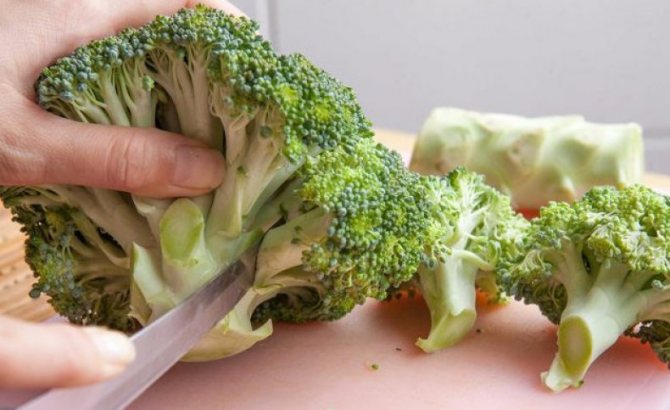

- Then all parts must be placed in a large bowl and filled with cold clean water. It is also recommended to add the juice of half a lemon to the product and leave to infuse for 5 minutes. The lemon will help maintain the vibrant color of the broccoli.
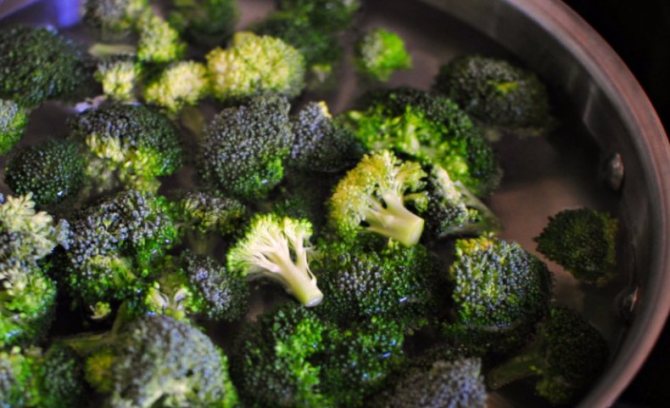

- Now you need to pour the entire contents of the bowl (without the vegetables) into the saucepan. There you will also need to add more water so that the vegetables are completely covered with liquid as a result. The saucepan is covered with a lid and the contents are brought to a boil over medium heat. The lid helps speed up this process.


- In the meantime, the broccoli will need to be placed in the steamer basket and when the water in the pot boils, put the basket in the pot. The water must be brought to a boil again (again under the lid) and the contents must be boiled for 5 minutes. If there is no steamer basket, then vegetables are allowed to be dipped directly into boiling water. But in this case, blanching should take about 2 minutes.


- Next, the vegetables must be removed from the pan and immediately lowered into ice water or brought under a stream of cold running water. This will cool the product quickly. You can also use a colander for this purpose if a steamer basket is not available.
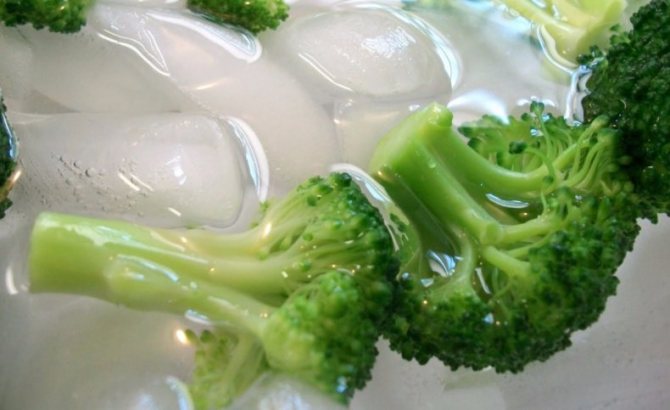

- After the broccoli is completely cooled, you need to drain all excess water, dry the vegetables a little and put them in special polyethylene bags, which are designed to store food in the freezer. It is recommended to lay out vegetables in portions in the amount that will be convenient to use in the future for preparing one meal. In this case, there will be no need to defrost more food than necessary, since you cannot defrost broccoli, and then freeze the unnecessary part again, this will ruin not only the appearance of the product, but also its taste.


- It is recommended to indicate the date on which the freezing was carried out on each packet. It is recommended to use vegetables within the next nine months, and such dating will help not to forget about the timing.
Can I be stored in the freezer?


Cauliflower is a rather demanding vegetable to store. And freezing should also be carried out according to the rules, taking into account the further use of the vegetable.
The first step to getting a quality product after defrosting is choosing the right dies.... The green leaves around the head of cabbage should be fresh and tight.
The inflorescences themselves are healthy, dense, without wilting areas and darkening. Black spots are associated with the appearance of the fungus. The areas affected by it are not suitable for food, and are not suitable for winter harvesting, including freezing.
Cauliflower can be frozen in various ways: fresh, boiled, disassembled into inflorescences, whole, etc. In all cases, it will retain most of the nutrients.
In doing so, it is important that the following conditions are met:
- freezing should be fast enough;
- repeated defrosting and repeated freezing - prohibited;
- it is advisable to know in advance how the cabbage will be used in the future (cooking soups, stewing vegetable stews, etc.);
- the product must be fresh and of high quality initially.
If it is especially important to preserve the aroma and taste of the vegetable, it should be frozen after preliminary boiling.
When raw cabbage is frozen, the beneficial substances in it will be preserved, but the taste may change, and the consistency will not be so dense. The best option for preparing for freezing is parsing into inflorescences with a diameter of about 30 mm.
You can find all the most interesting and useful information about storing cauliflower here.
Why pre-blanch
Blanching is an obligatory step in freezing broccoli. This is a necessary measure that allows you to destroy all enzymes that provoke oxidation, namely, this will help get rid of the formation of further unpleasant taste and unnatural smell.
There is an opinion that when such cabbage is frozen, heat treatment can be dispensed with, but in this case, most often, the inflorescences turn into dust, and the product can be simply thrown away after defrosting.
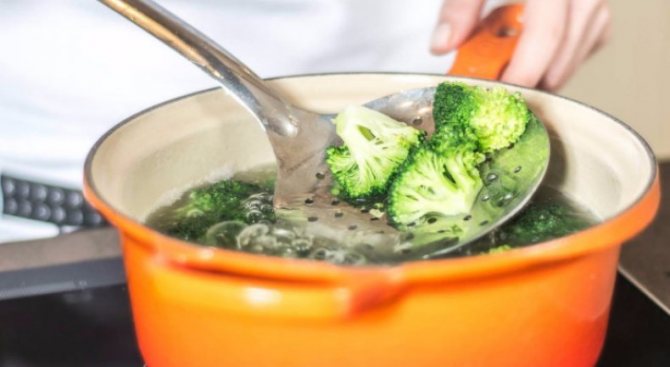

Cooling in ice water
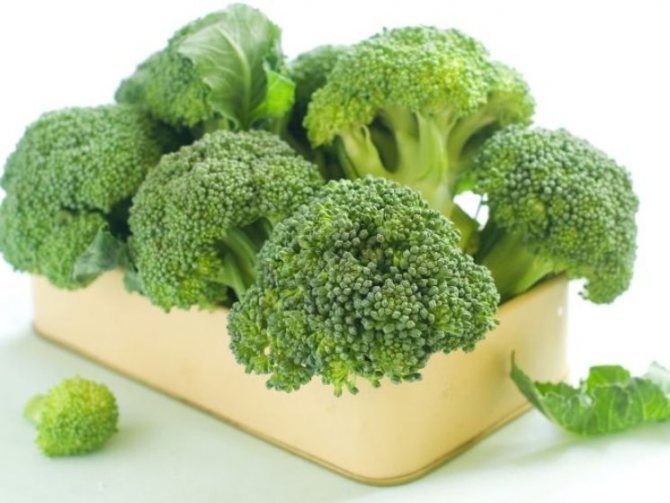

Prepare ice cubes in advance, as the water in which hot vegetables are placed heats up quickly. This stage is necessary in order to stop the cooking process immediately after blanching. Cooling takes 4-5 minutes. Check the water temperature all the time and add ice as needed.
Storage periods
Deep freezing of such vegetables can be realized at a temperature of the order of -18 ° C... This temperature condition in the freezer will be optimal and will allow the product to be stored for almost 12 months.
If the temperature in the freezer is kept between 0 ° C and -8 ° C, then vegetables can be consumed only in the next 3 months.
It is important to understand that frozen vegetables cannot be re-frozen after defrosting. Therefore, when defrosting the refrigerator

